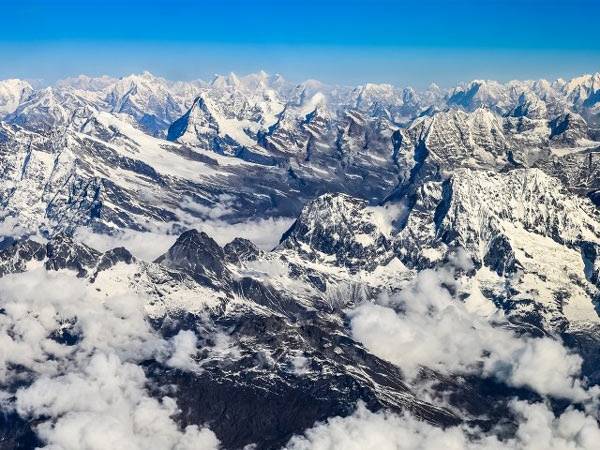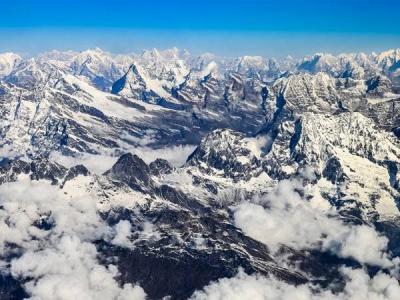Since the 19th century, human and industrial activities have caused climate change due to greenhouse gas emissions that act like a blanket wrapped around the Earth, trapping solar heat, raising temperatures, and melting glaciers. While world leaders and international organizations are working diligently to mitigate this phenomenon by various means to protect the planet, a new report has revealed an astonishing phenomenon in the highest mountain range in the world that could help slow the effects of the global climate crisis.
But how does this phenomenon work to slow climate change? The study published on December 4 in the journal Nature Geoscience indicates that when high temperatures reach certain ice blocks at high altitudes, it triggers a sudden reaction resulting in strong cold winds blowing down the slopes. Francesca Pellicciotti, a glacier science professor at the Institute of Science and Technology in Austria and the lead author of the study, stated that the warm climate creates a larger temperature gap between the surrounding air above the Himalayan glaciers and the cold air that comes into direct contact with the glacier surfaces.
She explained that this leads to an increase in chaotic thermal exchange on the glacier surface and a stronger cooling of the surface air mass, as illustrated in the picture below. When the cold and dry surface air becomes cooler and more dense, it sinks. The air mass flows down the slopes into the valleys, causing a cooling effect in the lower areas of the glaciers and the adjacent ecosystems. With ice and snow from the mountain range feeding 12 rivers, the glaciers in the Himalayas can sustain a cooling effect and maintain themselves while facing a potential rise in temperatures over the coming decades.
However, even with the presence of these cold winds, they are not enough to fully counteract the increasing temperatures and the melting of glaciers due to climate change, according to Thomas Schö, part of the ISTA research group. He explained that the cooling in the Himalayas is local but may still not be sufficient to overcome the larger effects of global warming and fully preserve the glaciers. He also pointed out that the overall scarcity of data in high-altitude areas worldwide has led the research team to focus on using unique ground monitoring records at one station in the Himalayas.
Promising Results
He noted that "the process we highlighted in the paper is likely to be globally significant and could occur in any glacier around the world where the conditions are met." He also indicated that the new study provides a compelling case for collecting more long-term, high-altitude data that is urgently needed to verify these new findings and their broader impacts.
It is worth mentioning that the average surface temperature of the Earth is now about 1.1 degrees Celsius warmer than it was in the late 19th century (before the industrial revolution) and warmer than at any time in the last 100,000 years. The last decade (2011-2020) was the warmest on record, with each of the past four decades being warmer than any previous decade since 1850, according to the United Nations.




